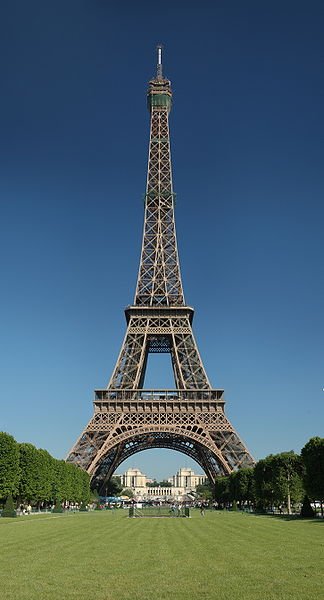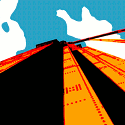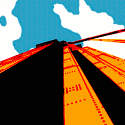the Eiffel Tower
Project concepts targeting the Eiffel Tower.
[Note: This blog entry is a port of our original wiki Eiffel Tower article for reference. Our wiki space is being retired.]
the Eiffel Tower assay #1
- Objective: Sonic map
- Target date: 2010
- Participants: One to three
- Duration: Two hours daily, over several days and in different weather conditions, as practical
- Equipment
- Digital audio recorder(s)
- Contact microphone(s)
- Digital camera
- Video camera (optional)
Overview
Obtain as many audio samples as practical while operating as discretely as possible. The idea here is not to create a public spectacle but to prepare for a later signal event. At the same time, participants should aim to capture as much interesting raw material as possible, and to document the activity for posting on the website. This will promote the more extensive activities to follow.

Image CC BY-SA courtesy of Benh LIU SONG/Wikipedia @ Wikimedia Commons.
Output includes a list of “stations”—locations around the tower with unique sonic characteristics. Written notes need to be in enough detail that these stations can be identified to future participants; matching photos might help as well, with thumbnails posted to provide visual “landmarks.”
If possible, the activity should take place over a season or two in order to understand the impacts of time of day, public traffic load, and weather. Do stations sound the same under all circumstances or do they vary dramatically, like the Golden Gate Bridge on windy versus calm days? Does the load of people occupying the tower vary, and does this have an impact? What appears to stimulate sound?
the Eiffel Tower gongMob!
- Objective: Synchronous audio capture event
- Target date: 2011
- Participants: Twenty five or more
- Duration: Main action: 5 minutes. The entire exercise, including collection of samples, should take under two hours
- Equipment
- Digital audio recorders
- Contact microphones
- Digital camera (optional)
- Video camera (optional)
- Laptop computer
Overview
A team of volunteers converges on the tower to occupy the various stations identified in the sonic assay. The goal is to sample the station points at the same moment in order to create a sonic “hologram” of the tower.
Coordination is more critical and far more complex than in an assay. Planning can be done wiki fashion through the site. It probably helps to assign participants to a number of roles well in advance so each can practice and develop their own approach:
- Chronologist: Recorders should be synchronized so digital timestamps can be used to align samples. The chronologist ensures each participant’s recorder is synchronized. This is probably easiest if done at a meet point before recorders take their positions.
- Conductor: The actual recordings need to start as close to the same time as possible. This is probably most easily signaled by some visual cue. A camera flash is too unpredictable, unless it comes from an agreed-upon location. Audible cues such as gunshots attract attention and could negatively affect the recordings.
- Recorder: Documentary audio recorders capture the samples at each station. They share responsibility for synchronizing their own gear and delivering captured samples.
- Archivist: The archivist needs to choose a method for capturing as much of the captured data as possible in the most pragmatic and efficient way. Direct uploads to the site are possible but there are likely to be issues. A second meet point after the event could get all materials downloaded onto a hard drive in minimal time.
- Edit crew: There will doubtless be format and file conversion issues. Noisy captures may be sufficiently interesting or it may be desirable to apply some simple filtering and normalize the volume levels. This production work should be done and samples reviewed before the public posting.
Unlike the assays, which can be followed up at leisure, output from a mob action is best posted immediately while interest levels (such as they are) are highest. It is preferable if much of the documentary content such as videos and photographs is submitted by the public after the event.


